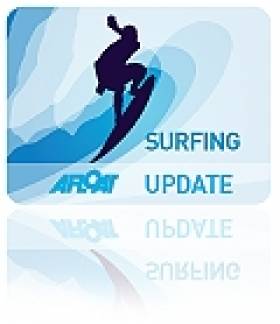Displaying items by tag: John McCarthy
The Man Who Swapped Big Wave Surfing For Life With God
#Surfing - He’s an Irish big wave surfer who’s credited with helping discover and naming the renowned Aileen’s break, near his home in Lahinch.
But more than a decade ago, John McCarthy traded the vices of the pro surfing lifestyle for a new life serving God, as the Irish Examiner reports.
Today, McCarthy is more easily found preaching the word of the Good Book at North Clare Community Church in Lahinch, which he co-founded and where he is an assistant pastor.
However, the born-again Christian still makes time for his former passion on the waves — especially since he and his wife run a surf school in the Co Clare coastal town, a place where fellow surfers have turned to organic farming as a way to seek peace in their lives.
And a new radio documentary, broadcasting tomorrow morning (Sunday 19 November) at 8am on Newstalk 106-108fm, follows McCarthy as he returns to the wave he named before he set on his new journey. The Irish Examiner has more on the story HERE.
McCarthy Swaps Surfing For Spirituality
#Surfing - To most people he's probably best known for that iconic AIB television advert, riding the giant waves at Aileen's off the Cliffs of Moher.
But to the surfing community in Ireland and beyond, John McCarthy is regarded as a pioneer of the sport on these shores.
The three-time former Irish senior champion was one of the first to discover and surf that Co Clare giant, and cement Ireland's status as a go-to destination for any wave rider worth their salt.
Today, however, McCarthy is a changed man, as he tells The Irish Post how he found religion and left behind the "egotistical" trappings of surfing culture for a life of greater meaning and purpose for himself beyond the allure of firsts and championship titles.
The Irish Post has much more on the story HERE.






























































